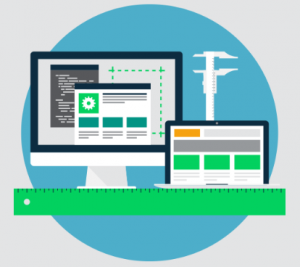If we assume that any device collecting data outside the enterprise data center is an edge device, then the predictions as to the numbers of edge devices that will be coming online in the next few years begin to look like massive underestimations.
Definitions of an edge device could range from a smartphone (which immediately swells the number of “edge” devices by an order of magnitude), down to the simplest temperature gauge on a remote HVAC (heating, ventilation, air-conditioning) unit.
But semantics aside, there’s no doubt that there is an increasing number of devices that possess their own storage, networking, and compute — computers in all but name. Common cases where edge “computing” is becoming more prevalent include healthcare, facilities management for utilities, retail outlets, buildings management, transport, and supply chain.
And where previously the interconnections between edge and cloud were capable of carrying data to and from a central data collation/processing point were adequate, as more devices come online, that’s less the case.
There are plenty of apps and services, too, that would be much improved if information processing were done locally. We see that trend more often, from Netflix using local “distribution centers” where data is cached and streamed with greater efficiency, to retail outlets that process video feed information onsite.
The most common use case quoted that demands localized information processing is transport; in particular, autonomous driving, where millisecond-level reactions are clearly indispensable. Self-driving truck fleets are yet to become a reality, of course, but even in the interim, most businesses are well-aware that moving data isn’t free, cloud computing isn’t necessarily the best option (or best cost), and not everywhere can be online all the time, or with fast-enough connectivity.

Edge technologies, whether designed with IoT in mind or otherwise, are offering organizations new possibilities from localized data collation, management, processing, and acting on. Whether it’s a single water pump sensor thousands of miles from civilization, or an extensive new urbanized area that’s a new-age “smart village,” the numbers of edge deployments are growing quickly. And at each point of implementation, more devices can (and perhaps should) use the local network and facilities.
So far, so “brave new frontier”! But the practicalities of multiple, massively scalable edge deployments are matters that require careful thought. Edge installations might also be termed remote locations, and therefore setting up, managing, and developing each one needs very special capabilities. The technology enabling all the edge’s advantages should:
- be easy to install, or even have “zero-touch” configuration (because putting bodies onsite is expensive)
- have a unified orchestration system (to keep maintenance and management costs down)
- be as interoperable with other systems and networks as possible (because otherwise, management becomes too complicated)
- be scalable very easily without massive licensing costs a lurking threat
- be repairable or configurable with mainstream, common skillsets.
In all those cases, the open-source technology stack is clearly the route to pursue. Open-source technology already runs the world’s networks, its data centers, server farms, its storage and archives, its databases, and just about every cloud-based piece service and app. (In fact, if you’re an Android phone user, you’re running open-source software in your pocket too.)
The de facto technology standard, developed by huge communities of professionals and organizations, is omnipresent from edge to cloud, to core, and at every network waypoint along the way. As one of the most recognized and respected open-source software organizations, SUSE helps create, develop, and publish the standards with which the entire world’s technology works.
And in the context of edge and IoT, SUSE’s technologies have been attuned, specifically, for just the types of interoperable, scalable, and massively powerful platforms that are becoming a critical part of the enterprise’s structure. Interoperability is guaranteed, as is adherence to standards and, underpinning it all, the highest levels of security. In fact, for these reasons and more, your organization probably uses SUSE technology already (ask your CTO!).
So what are the specific benefits of partnering with SUSE for edge & IoT projects?
1. A product range ready to hit the ground running.
The combinations of technology typically best used will naturally vary in every vertical and every use case. But as an example, SUSE has developed a framework (operating system) specifically for lightweight, scalable IoT devices: the aptly-named Just Enough Operating System (JeOS).
Partnered with the SUSE Linux Enterprise Server, and products like SUSE Studio and SUSE Manager, producing production-ready deployments is quicker, easier to manage, is totally future-proof and ready to scale.
As new generations of IoT devices interact with each other at the edge, they will rely on powerful technology at the core — especially to manage systems based on Infrastructure as a service (IaaS). The interplay doesn’t work without a platform at the core that’s already attuned to IoT use. Even as edge tech gets smarter, the core will need to consolidate, aid scalability and create the bigger overview.
2. Security.
While no one would argue that open-source solutions are necessarily more or less secure than proprietary systems, the fact remains that with open, published standards that can be examined by anyone, the fact is that many eyes on a product make it inherently safe, continuously.
And embedded SUSE Linux on IoT devices shares the same operating system basis as the enterprise-grade standards that are present in the much-respected SUSE Linux Enterprise Server.
3. Connectivity.
The IoT and edge solutions from SUSE ensure that architectures, software components and libraries, storage methods, and interfaces between apps and services are all industry-standard, open, and highly extensible.
While this ensures future-proofing of the edge-based systems as far as is possible, the legacy OT (operational technology) systems that may be in place in many installations are also integrate-able into the network. In industrial settings, especially, the longer lifespans of expensive plant and machinery, for example, means that backward compatibility is as important as future-proofing the chosen solution.
With SUSE’s extensive experience and ready-to-roll edge & IoT technologies, heavy industry verticals can digitally transform as flexibly as the technology startup.
In software and systems, open-source is the clear choice, and for IoT, IIoT, OT and edge, SUSE is the most practical variant. To ensure that your edge installations are capable of the specific demands of your particular use-cases, join the company for the IoT tracks at SUSECON in Dublin, Ireland, March 23-27. Or, if you can’t make the event. reach out to a representative from SUSE today.









